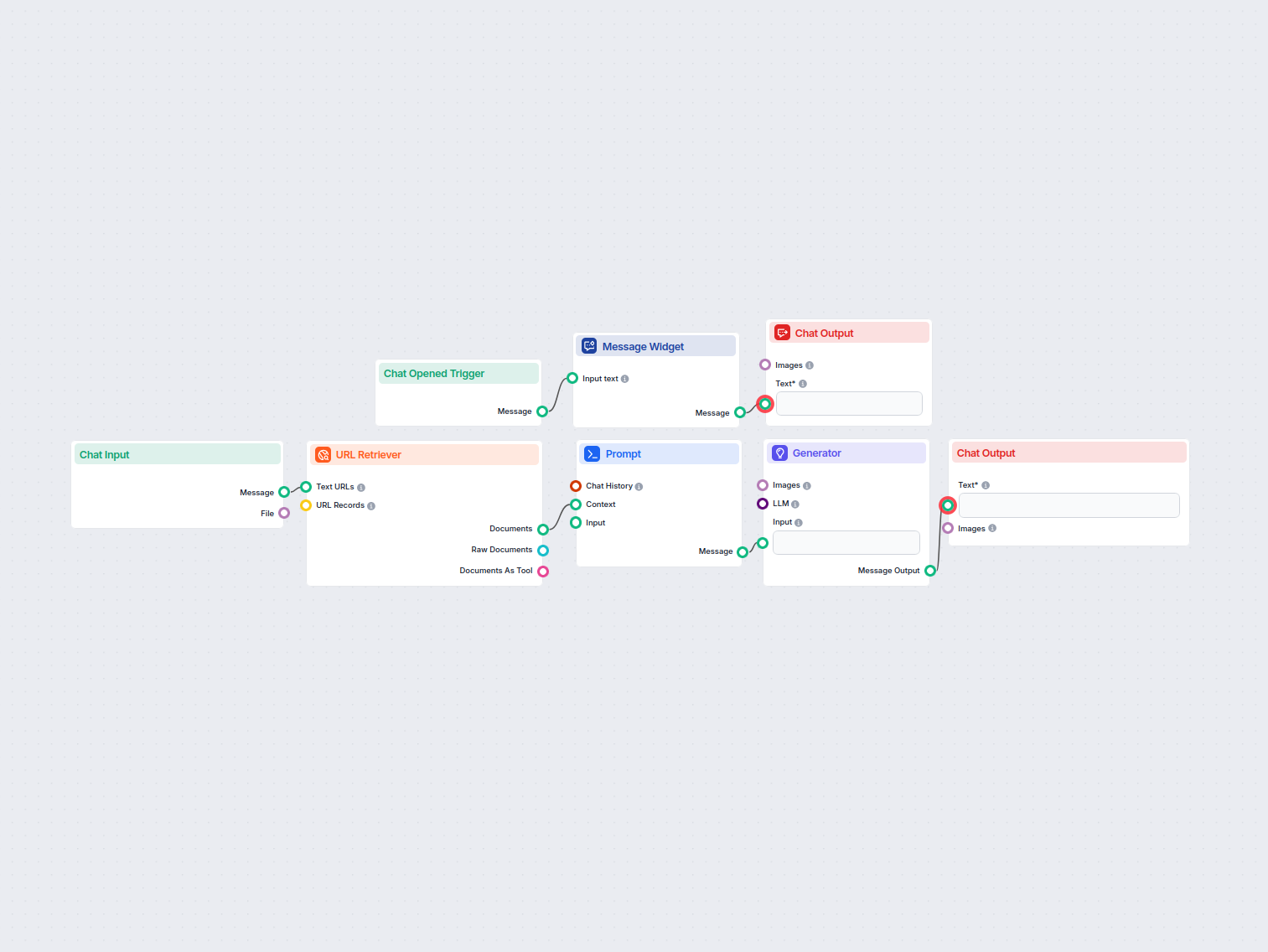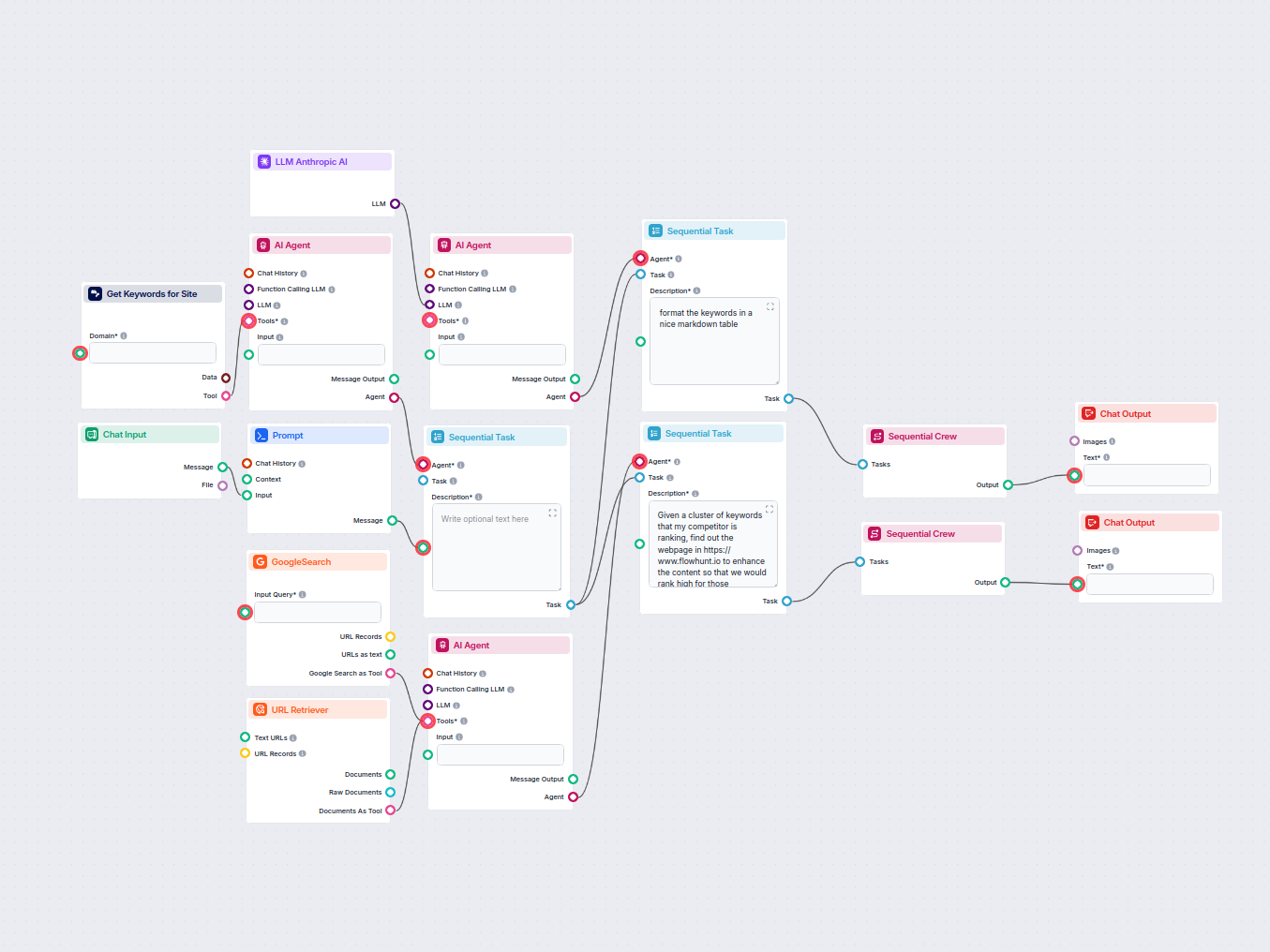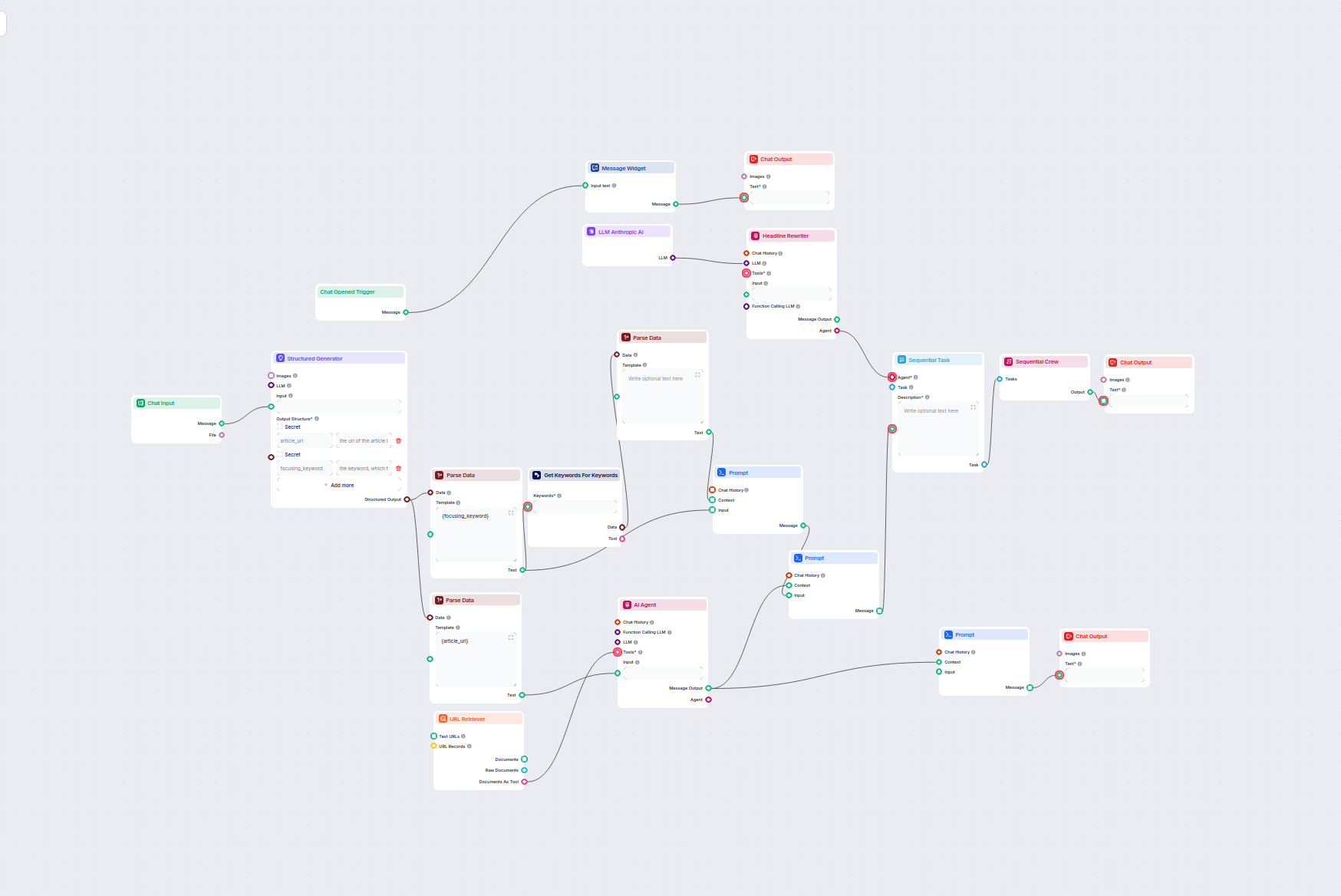Relevant Search Queries to my page
Prompt template for displaying relevant search queries related to the analyzed web page.
This AI-powered workflow analyzes the content structure of your web page, compares it with top-ranking competitor pages, and provides tailored recommendations on how to improve your page’s SEO performance. By leveraging Google search, advanced language models, and smart content extraction, it helps you close content gaps and optimize your website for higher search engine rankings.

Flows
Prompt template for displaying relevant search queries related to the analyzed web page.
Minimal prompt template used to pass competitor content as context.
Prompt template for generating a structured SEO report based on context.
Prompt template instructing the LLM to compare user's web page structure with competitors, suggest improvements, and propose long-tail keywords.
Prompt template for injecting the top competitor pages' content as context.
System message prompt for the Query Expansion component, instructing the LLM to generate competitor-finding queries.
Below is a complete list of all components used in this flow to achieve its functionality. Components are the building blocks of every AI Flow. They allow you to create complex interactions and automate tasks by connecting various functionalities. Each component serves a specific purpose, such as handling user input, processing data, or integrating with external services.
The Chat Input component in FlowHunt initiates user interactions by capturing messages from the Playground. It serves as the starting point for flows, enabling the workflow to process both text and file-based inputs.
The Chat Opened Trigger component detects when a chat session starts, enabling workflows to respond instantly as soon as a user opens the chat. It initiates flows with the initial chat message, making it essential for building responsive, interactive chatbots.
The Message Widget component displays custom messages within your workflow. Ideal for welcoming users, providing instructions, or showing any important information, it supports Markdown formatting and can be set to appear only once per session.
Discover the Chat Output component in FlowHunt—finalize chatbot responses with flexible, multi-part outputs. Essential for seamless flow completion and creating advanced, interactive AI chatbots.
Unlock web content in your workflows with the URL Retriever component. Effortlessly extract and process the text and metadata from any list of URLs—including web articles, documents, and more. Supports advanced options like OCR for images, selective metadata extraction, and customizable caching, making it ideal for building knowledge-rich AI flows and automations.
Learn how FlowHunt's Prompt component lets you define your AI bot’s role and behavior, ensuring relevant, personalized responses. Customize prompts and templates for effective, context-aware chatbot flows.
FlowHunt supports dozens of text generation models, including models by OpenAI. Here's how to use ChatGPT in your AI tools and chatbots.
Explore the Generator component in FlowHunt—powerful AI-driven text generation using your chosen LLM model. Effortlessly create dynamic chatbot responses by combining prompts, optional system instructions, and even images as input, making it a core tool for building intelligent, conversational workflows.
Query Expansion in FlowHunt enhances chatbot understanding by finding synonyms, fixing spelling errors, and ensuring consistent, accurate responses for user queries.
FlowHunt's GoogleSearch component enhances chatbot accuracy using Retrieval-Augmented Generation (RAG) to access up-to-date knowledge from Google. Control results with options like language, country, and query prefixes for precise and relevant outputs.
FlowHunt's Document Retriever enhances AI accuracy by connecting generative models to your own up-to-date documents and URLs, ensuring reliable and relevant answers using Retrieval-Augmented Generation (RAG).
Flow description
This workflow is designed to automate and scale the process of analyzing a web page’s content structure, comparing it with top competitors, and generating actionable SEO recommendations to improve the page’s ranking and visibility. The flow brings together tools for web content extraction, competitor research, AI-powered text generation, and structured reporting.
| Step | Description |
|---|---|
| User Input | User submits their URL. |
| Content Extraction | Extract headings and structure from input page. |
| Query Expansion | AI generates search queries to find competitors, excluding the user’s own site. |
| Competitor Retrieval | Google search + scraping to get competing page content. |
| Context Formatting | Competitor data is formatted for AI consumption. |
| AI Analysis | LLM compares structures, suggests improvements, and generates keyword ideas. |
| Reporting | Structured SEO report and reference materials are presented to the user. |
| Supporting Output | Shows relevant search queries and competitor page content as reference. |
This workflow bridges the gap between manual SEO research and scalable, AI-assisted content improvement — making site audits more actionable, efficient, and transparent.
We help companies like yours to develop smart chatbots, MCP Servers, AI tools or other types of AI automation to replace human in repetitive tasks in your organization.
Automatically turn any YouTube video transcript into SEO-friendly web page content. Enter a YouTube URL and get a fully structured web page draft, complete with...
Automatically analyze your competitor’s homepage URL to discover their top ranking keywords, gather keyword data from Google, and receive actionable recommendat...
This AI-powered workflow finds the best SEO keywords for your blog article and automatically rewrites headlines to target those keywords, improving your content...
Cookie Consent
We use cookies to enhance your browsing experience and analyze our traffic. See our privacy policy.



